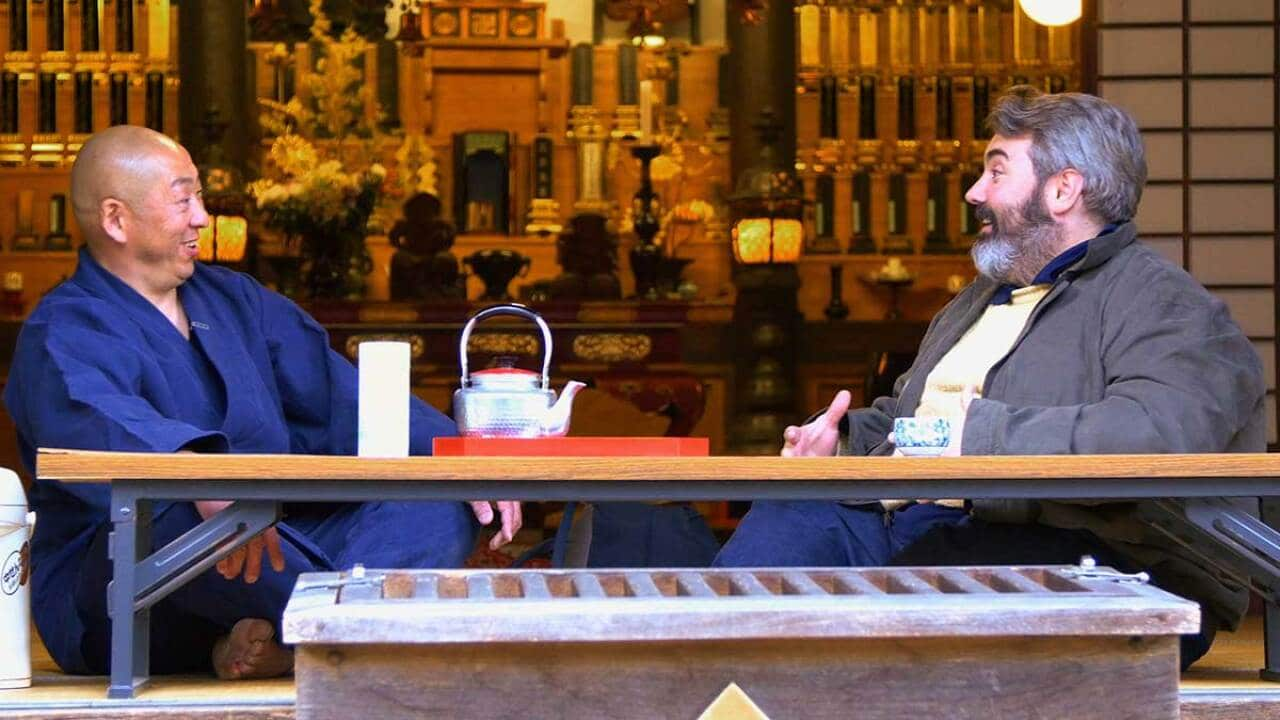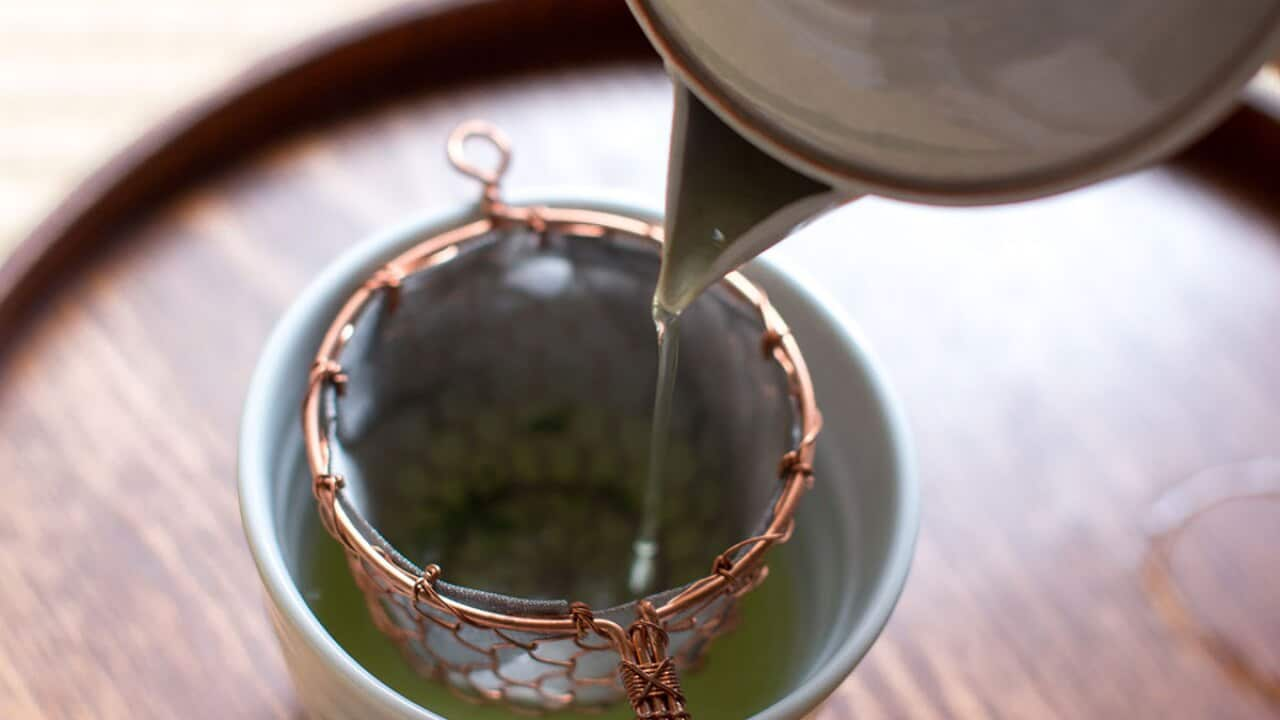I'd tried every diet under the sun, and my eating habits were terrible. I ate a lot of fast food, and when I cooked, things weren't much better. I knew something needed to change - and then change found me. A fellow filmmaker wanted to make a documentary about the health benefits of the Japanese lifestyle - he grew up in Japan, and he knew how different their food culture is.
So I went off to Japan (watch Craig's trip in My Japanese Diet at the end of this article, or on ). It changed my life. Since returning from Japan, I've lost 25 kilograms, and I make most of my own meals now. I've developed a taste for foods that I'd never heard off, and I drink a lot of green tea. So what lessons did I learn from my trip to Japan?
So what lessons did I learn from my trip to Japan?

Back at work lighter and healthier: Craig on the set of Red Christmas, after his return from Japan. Source: Craig Anderson
1. Traditional doesn’t always mean healthy
I’m lucky I met with a nutritionist before going to Japan, because there are so many delicious things to eat there. Noodles, curry dishes, and delicious are all healthy if eaten in once every few days, but I’m the kind of guy who wants to eat those dishes for every meal. Learning about preferencing greens, protein and carbs (in that order) was tantamount in making Japanese eating healthy.
2. Don’t eat like a Sumo…
I asked world-famous Sumo wrestler Konishiki Yasokichi how Sumo wrestlers got so big, thinking he’d say it was due to eating loads of deep fried food. But I was surprised to hear that they mostly eat congee, a soupy rice dish. The difference is, they get up early, train for six hours on an empty stomach, then eat a couple of big bowls of congee and fall asleep. Congee can be quite healthy, but I've also learned that portion control is important.
sumo style

Sumo stew (chanko nabe)
3. Traditional eating offers structure and boundaries
I lost twenty-five kilograms eating traditionally, and even though Japan is considered one of the healthiest nations on earth, I think the biggest contributing factor was having a set menu.
Living a multi-cultural lifestyle allows me to eat the worst of every country, and within that, I’d often weigh up the negative foods. For instance, I used to think a kebab wasn’t as bad as a pizza, so eating a kebab over a pizza meant that I was being ‘healthier’.
But within traditional eating habits, I’m unable to make those ‘cheat’ choices. If I go to an Italian restaurant than I’ll find that a salad is healthier than a pizza and that’s probably what I’d choose (as opposed to walking next door and getting a ‘healthier’ pad Thai).

During his Japanese trip, Craig ate everything with chopsticks, to slow down his eating. Source: My Japanese Diet
4. Practice makes perfect
I was lucky enough to learn how to make with a Japanese woman who lived in the suburbs and whom cooked it daily for her family. She was incredibly embarrassed of her dish, which looked near perfect to me. Apparently sushi chefs spend five years perfecting the dish, which involves slowly frying thin layers of egg. I make it once a week and it looks like someone dropped an omelette.
5. I'm lucky I like natto
Now, I’m no scientist, but there must be something about my DNA that allows me to tolerate the fermented bean delicacy. I know people say it smells like foot odor mixed with paint thinner and has the consistency of snot, but when I eat it, it tastes like Dijon mustard over cannellini beans. I eat it for breakfast every day and really like it. I’m yet to meet another Australian who does the same, and it seemed that half of Japan couldn’t stand it either.
packed with benefits

Why Japan’s ancient natto could be a key to a healthy life
6. Konnyaku is awesomely weird
Another product I’ve incorporated into my diet is the bizarre grey jelly slab known as . It’s made by grounding up a part of the konjac plant which produces a large beautiful maroon flower. The resulting gel is hard and has killed a few people in America who treated it like gelatin. I boil it in fish sauce and cut it into a pretty shape.
7. I’ve become a green tea junkie
So much of Japan runs on sencha (green tea), which is very similar to black tea, just not as withered or de-oxidised. A good way to think of it is ‘virgin’ tea. Loads of nutritionists claim that it’s a superfood, full of health benefits, but I mostly use green tea as my daily source of caffeine. It’s lighter than coffee, doesn’t need dairy and perfect with most meals. I also have blends that are mixed with dried fruit that when mixed with ice make a great after-dinner drink.
Join Craig on his trip to Japan in My Japanese Diet, streaming now on or watch it here:







